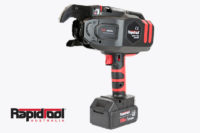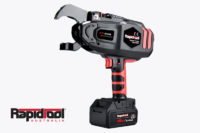Construction projects are typically hazardous. They are fast-paced situations where accidents and mishaps are likely to occur. Many health problems and injuries can be prevented when you use the right tools, such as the rebar tier, which will help keep your workplace more efficient and safer. It is a small and compact hand-held machine that will tie rebar together. It is easy to operate, as you only need to pull a trigger to activate the tying function. A reel is attached to rebar tier feeds and it is fed with the wire for tying. The wire is then cut and tied to the rebar.
One of the advantages of using a rebar tier is that it minimises a worker’s risk of developing forearm strain, which typically occurs with repetitive manual twisting and cutting of the wire against reinforcing steel bars. Moreover, the tool speeds up the process of tying rebar, while ensuring a more efficient way to complete the job. This way, the tool also helps increase productivity, while keeping your construction site healthier and safer for your workers.
Some types of the rebar tier will come with an extended arm, which will be useful when you need to tie reinforcing steel bars at ground level. With this tool, you do not have to worry about positioning yourself awkwardly by bending forward at an unusual angle. The tool applies the same motion of pulling the trigger to function, but this time, it is useful at tying the rebar at a lower level. So, there is no need to bend and you can remain upright as you hold the tool over the rebar.
Consistency is key to a stable structure, and the rebar tier can help assure that by creating perfectly tied rebars. Despite the way it looks, the tier is low-maintenance equipment that will require only a few components: wire reels and the battery. Many rebar tiers are wireless as they are powered by batteries, so you can reduce trip hazards in your workplace. They can also be practical when electricity is unavailable or when the tying process needs to be conducted far from an electrical outlet.






